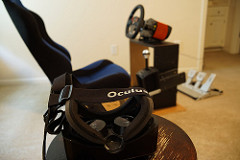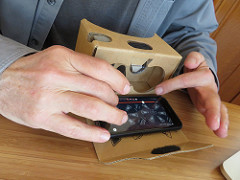Virtual Reality films or 360 degree films take the viewer into the environment where the film is shot. It is like walking into the constructs of one’s imagination. VR technology gives us the ability to walk into a foreign setting while at home/office or just about anywhere. Today the world is moving towards immersive experience and VR by simulating real life experiences, gets closest to such immersion. The sectors for which VR can be useful are varied and a common use of Virtual Reality is for training purposes. Following are the different fields where VR can be implemented along with its uses:
1. Virtual Reality in Military:
The best use of Virtual Reality in Military can be made for training purpose. All three services of the military i.e. army, navy and air force, can make great use of Virtual Reality for providing training. Following are some fields of military where Virtual Reality can be of great use:
a) Flight Simulation
b) Battlefield Simulation
c) Virtual boot camp
d) Medical training
e) Vehicle Simulation

2. Virtual Reality in Education:
Virtual Reality can be of much use in the field of education as it is able t present complex data in an accessible way to students which is fun and easy to learn.
3. Virtual Reality in Healthcare:
Healthcare sector is also one sector which has immense scope for the implementation of Virtual reality. It can use this technology for training students and inexperienced doctors as well as for the following:
a) Surgery Simulation
b) Phobia Treatment
c) Robotic Surgery
d) Skills training
4. Virtual Reality in Entertainment:

The entertainment industry is one of those industries that has welcomed this new technology with open arms. Following are some of the major implementation areas of virtual reality:
a) Virtual Reality gaming
b) Virtual museums
c) Virtual tour of Art Galleries
d) Theatre, e.g. interactive performances
e) Discovery centers
f) Virtual theme parks and animal parks or zoos
5. Virtual Reality in Heritage:
Virtual Reality technology can be utilized in this field for making the viewer experience a historical monument or event without him actually going to the place. Some implementations are as follows:
a) Walkthroughs for monuments.
b) Walkthroughs for stone-age.
c) Walkthroughs for sculptures
d) Walkthroughs for caves
e) Walkthroughs for archaeological digs
f) Walkthroughs for old towns and villages.
6. Virtual Reality in Business:
Businesses can use the Virtual reality technology for the following benefits:
a) Virtual tours of business environment
b) Training new employees
c) 360 degree view of product
7. Virtual Reality in Media:
Virtual reality can be used to create excellent web-series and coverage of live events that will make the viewer feel as if he/she is present at the venue.
a) Coverage of live events like rock-concerts
b) Live-action films
c) Animation films
d) Motion graphics
8. Virtual Reality in real-estate:
Virtual reality films can be used efficiently in the real-estate industry for viewing plots, sample houses, land, locality etc. It is a great way to understand and view different places from your home. 360 degree photos found a lot of acceptance in real-estate for space showcasing and now it’s time for 360 degree videos to do its bit.